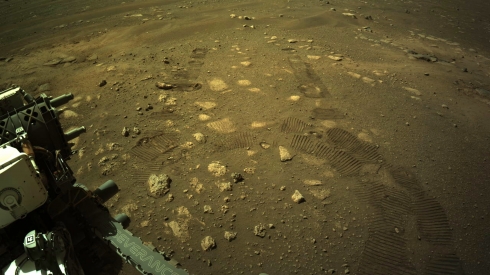NASA's Perseverance rover takes 6.5-metre test drive on Mars

The short trip on Thursday was a mobility test as checks are carried out into the rover's systems. NASA aims to have Perseverance take trips of 200 metres or more once it starts its scientific exploration.
The rover moved forward 4 metres, turned in place to the left and then backed up around 2.5 metres to park temporarily.
"The rover's six-wheel drive responded superbly," said NASA engineer Anais Zarifian.
"We are now confident our drive system is good to go, capable of taking us wherever the science leads us over the next two years."
The rover, which weighs around 1,000 kilograms and is the size of a small car, touched down on Mars in a risky landing manoeuvre on February 18 after a roughly 480-million-kilometre journey through space.
Perseverance is expected to study the Mars surface for at least two years as it examines the climate and geology and collects rock and soil samples.
The rover travelled through space for nearly seven months after launching from Cape Canaveral in Florida.
It landed in a massive crater called Jezero, the site of a 3.5-billion-year-old former lake that scientists say could provide evidence that microbes previously existed on Mars.
Mars had water on its surface billions of years ago, a fact that has led to speculation that there may have been some form of life on the planet.
On Tuesday the mission tested Perseverance's robotic arm, which will be the main tool used for close-up examination of the crater's geological features.
It will then drill down and take away samples.
Last week, the rover sent its first 360-degree photo from the planet's surface, showing a desolate region with geological formations, including a wind-carved rock and the rim of the ancient crater.
NASA hopes the rover project, which cost more than 2 billion dollars, will help pave the way for human exploration of the Red Planet.
The rover joins NASA's InSight lander, which has been on the Martian surface since 2018, and the Curiosity rover, which landed on Mars in 2012.













